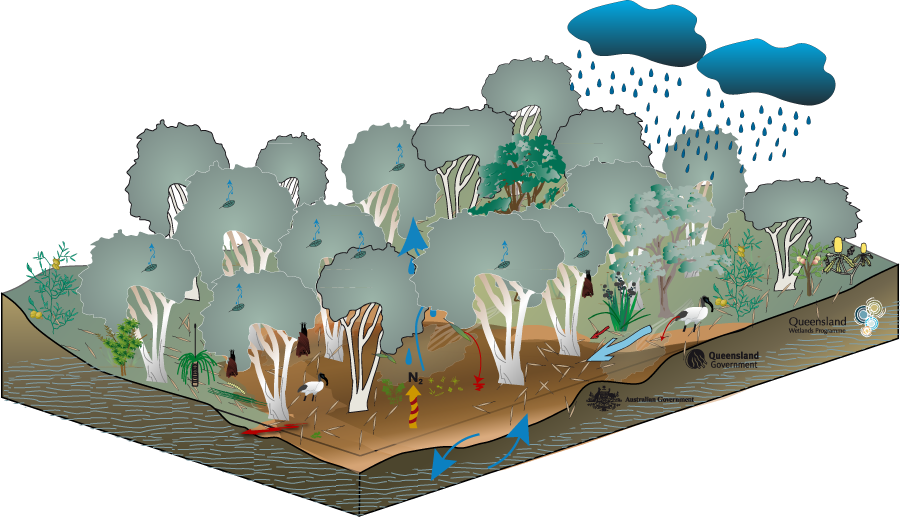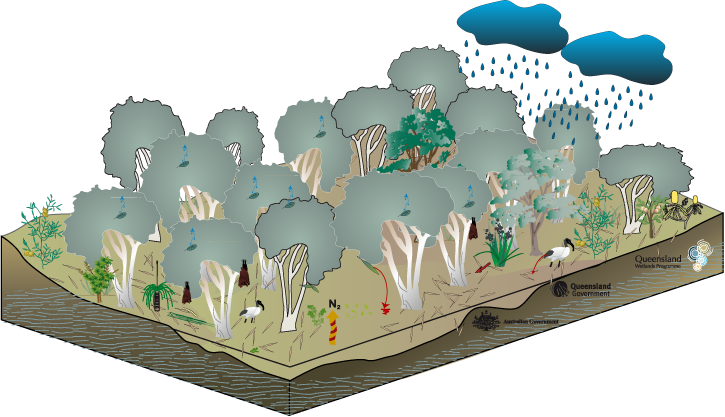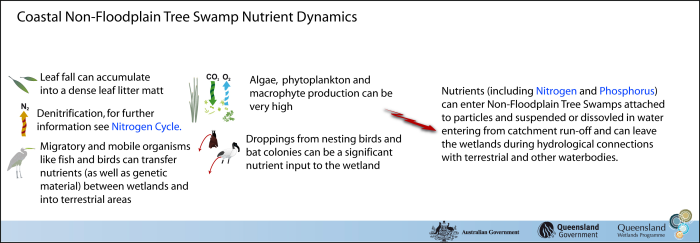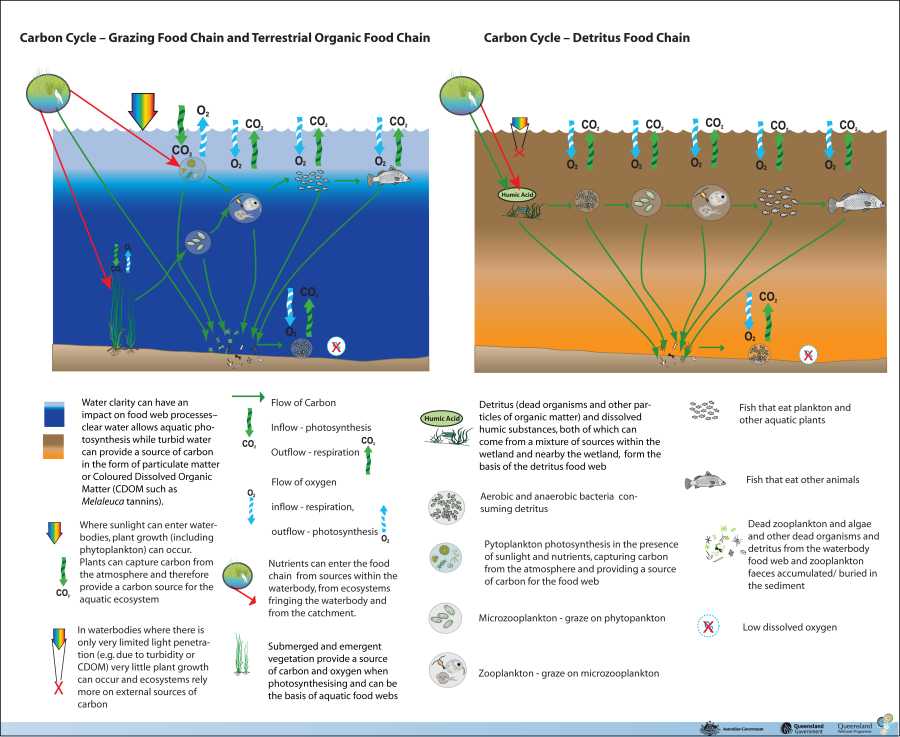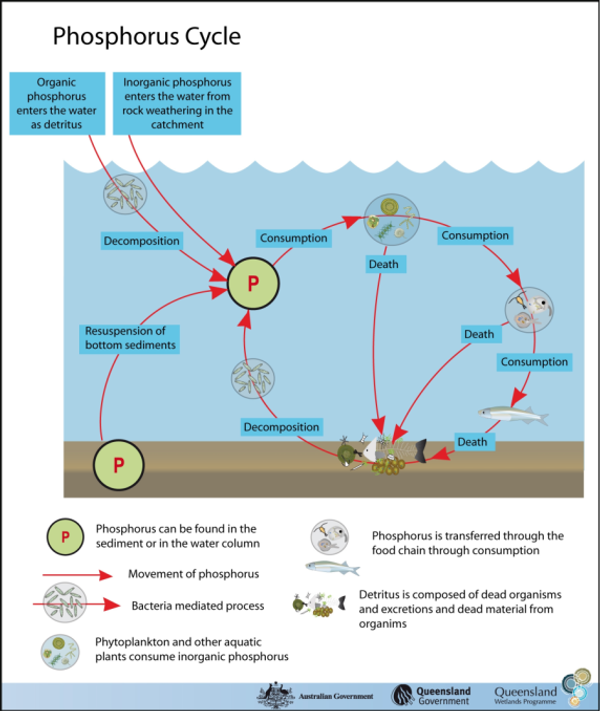|
|
Coastal and subcoastal non-floodplain tree swamp—Melaleuca spp. and Eucalyptus spp.Coastal and subcoastal non-floodplain tree swamp—Melaleuca spp. and Eucalyptus spp. – Nutrient dynamicsClick on elements of the model or select from the tabs below
Sources of nutrients include nutrients carried in surface water flow into the wetland habitat and droppings from nesting birds and bat colonies can also be a significant nutrient input to the wetland. Nutrients can leave these Coastal Non-Floodplain Tree swamps through the same mechanisms – through water flow out of the wetland habitat, and migratory and mobile organisms (such as birds) transporting nutrients to other parts of the terrestrial or estuarine landscape. Nitrogen can be transferred from the wetland into a less biologically available form in the atmosphere through the process of denitrification. High levels of organic carbon, high temperatures, high nutrients (particularly nitrate) and low levels of oxygen in areas inundated with water create ideal conditions for denitrification to occur. Melaleuca spp. trees can survive under conditions comparable with nutrient enrichment by sewage and therefore can be a considerable store or source of nutrients, depending on conditions. Melaleuca spp. trees transfer nutrients from the sediment and water column into plant growth and then into senescent leaf fall. Fallen Melaleuca leaves break down very slowly due to their high carbon content (which is largely made up of decay-resistant lignins) and anti-bacterial compounds. Leaves can therefore accumulate on the ground to form a dense leaf litter matt. This litter matt can be a long-term nutrient store in Melaleuca wetlands as, even during flooding conditions, the matt can remain intact, only losing freshly fallen leaves through physical removal and leaching soluble organics (not nitrogen and phosphorus). Though Melaleuca forest production is relatively high, algae (in the shallows), phytoplankton (in deeper waters) and macrophyte production can be even higher in these habitat types, with faster growth and recycling rates.
Last updated: 22 March 2013 This page should be cited as: Department of Environment, Science and Innovation, Queensland (2013) Coastal and subcoastal non-floodplain tree swamp—Melaleuca spp. and Eucalyptus spp. – Nutrient dynamics, WetlandInfo website, accessed 8 May 2025. Available at: https://wetlandinfo.des.qld.gov.au/wetlands/ecology/aquatic-ecosystems-natural/palustrine/non-floodplain-tree-swamp/nutrients.html |

 — Department of the Environment, Tourism, Science and Innovation
— Department of the Environment, Tourism, Science and Innovation

